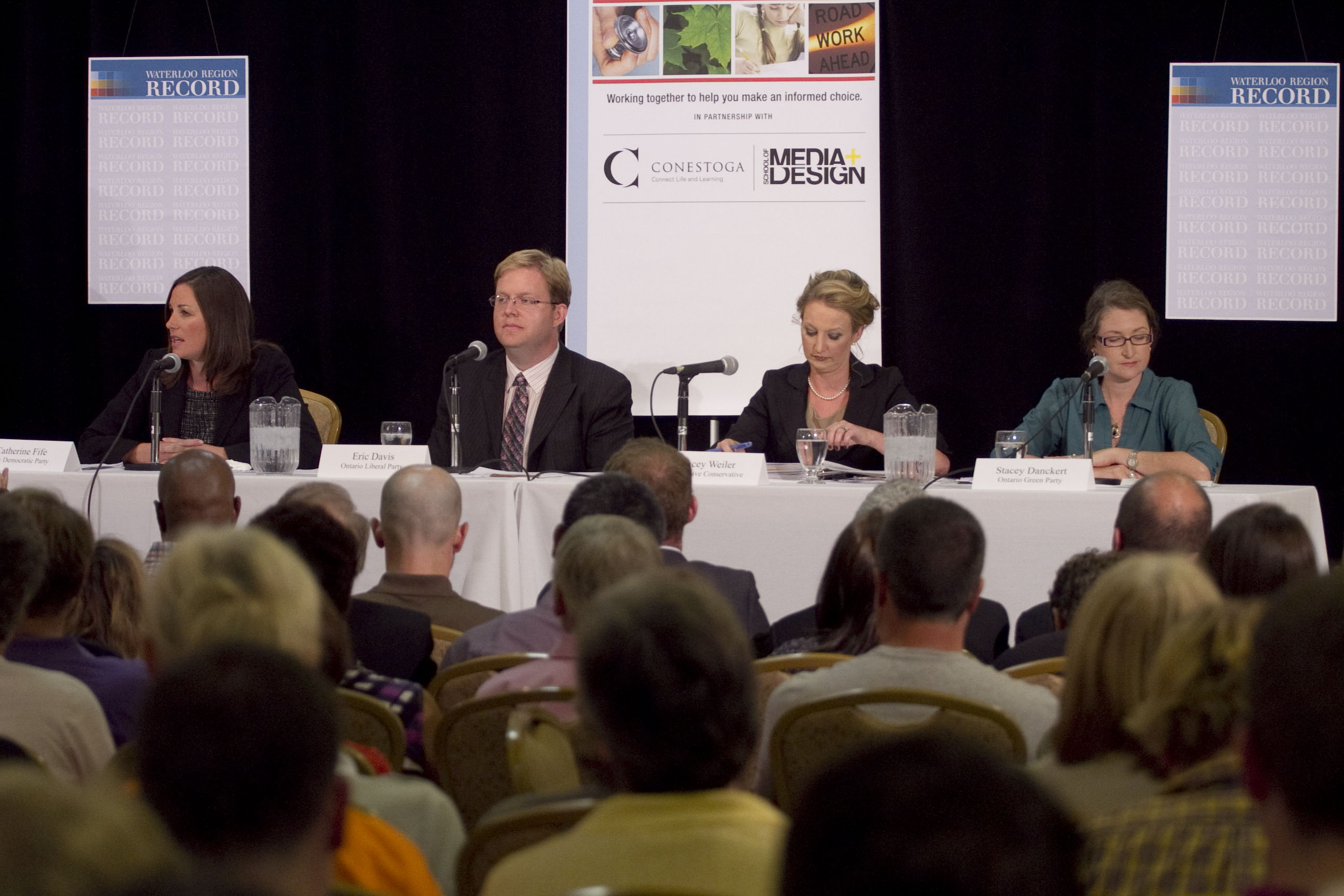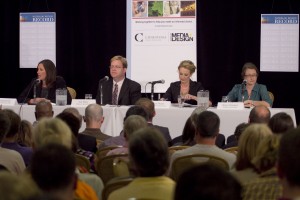K-W byelection heats up


Wilfrid Laurier University and the University of Waterloo (UW) will be greeted with a provincial byelection on Sept. 6, a date that has been deemed not ideal for the student vote.
“Well the timing is far from ideal for students because a lot of them won’t be back on campus yet, they’ll still be working at home, a lot of them will move to campus the following weekend,” explained Chris Walker, the vice president of university affairs at the Wilfrid Laurier University Students’ Union. “In addition first-year students that are around, they will be busy with Orientation Week and voting will be the last thing from their minds.”
While the byelection was called in April, Ontario Premier Dalton McGuinty didn’t set the date for Sept. 6 until Aug. 8 — a date that is exactly 11 months after the 2011 provincial election. A variety of reasons have been given for the reasoning behind the date with the recent confrontation with teachers’ salaries and the Vaughan byelection the main ones.
If the Liberals win both byelections then they have the opportunity to achieve a de-facto majority.
“I’m surprised of the timing because students would normally approach the Liberals and I thought that, traditionally, this would be a Liberal-Conservative fight,” explained Barry Kay, a political science professor at Laurier. “The student vote isn’t very huge because turnout is pretty low. Nonetheless, it could matter, like a few hundred votes — maybe more.”
Both WLUSU and the UW Federation of Students are working with what they have and are trying to get students involved in the electoral process.
“The last election was won only by 4,000 votes and it could be up to anywhere around 40,000 students in our riding,” said Adam Garcia, vice president of education at the UW Feds. “We have a lot of power on our hands and we want students to know that so they get out to the polls to choose the best representative that will do the best job for them.”
Walker and Garcia have met with most of the candidates to outline their concerns with the state of post-secondary education in Ontario such as the eligibility of the 30 per cent Ontario tuition grant. Ten have decided to run in the byelection, but the four candidates from the top four parties in the last election are Catherine Fife for the NDP, Eric Davis for the Liberals, Tracey Weiler for the Progressive Conservatives and Stacey Danckert for the Ontario Greens. While both Walker and Garcia noted that they will be hosting polls on their campuses, Elections Ontario notified them this year first-year students living in residence will not be able to use the university residence list as proof of address as they had in previous years. Instead, they will have to bring the correct documentation as proof, something that might further deter students on campuses to vote.
“I’m not exactly sure if it was done by a particular candidate or if it was a decision made by Elections Ontario,” said Garcia. “But what happened was that we were originally under the impression that each residence can simply run a list of eligible voters and they can pass that list along to Elections Ontario and that can work as proof of students’ residence.”
“Obviously that’s concerning to us because with a shorter time frame and now residences are in the training session, it’s going to be much more difficult for them to accommodate that,” he continued. “At UW for example, 6,000 students might need letters as proof of residence and they simply might not have the resources to do that.”
According to Kay, it’s not just students who might be disengaged with this byelection.
“I think this is invisible to a lot of people,” he emphasized.
What you’ll need to vote:
– Valid photo identification
– Proof of residence (bills, lease form, etc.)

